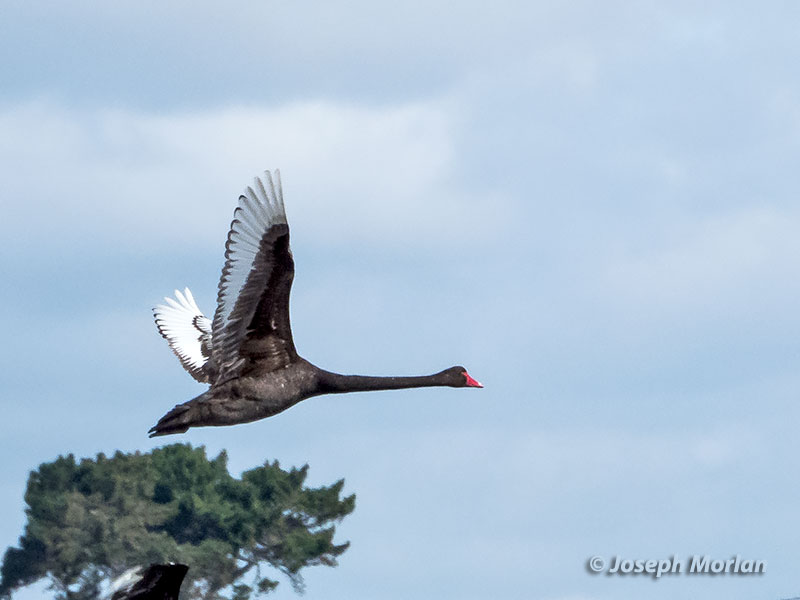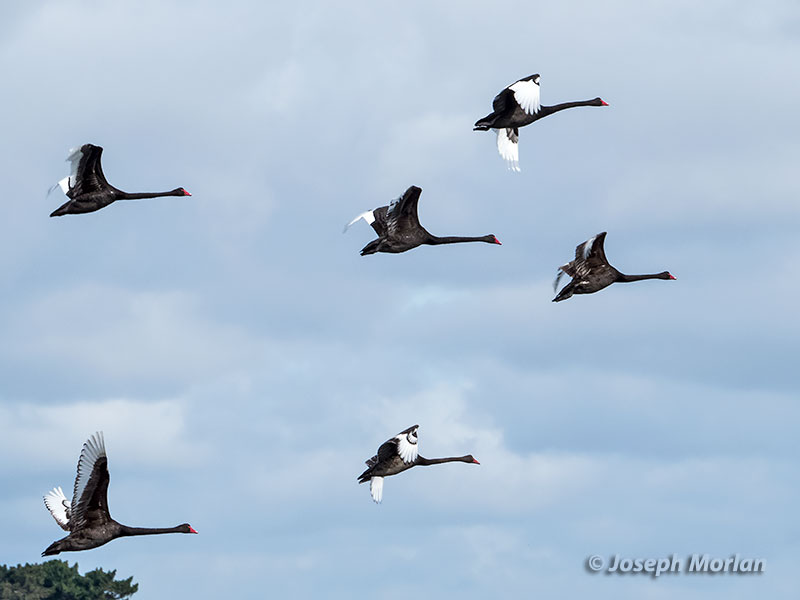

In New Zealand, Black Swans usually molt January-February during which time they are flightless. Based on the dark tips to the primaries and secondaries, this individual (top) is a young bird with retained juvenile flight feathers. It was part of a flock consisting of both adults and young (bottom) which had not started molt. This species is native to Australia but there is historical evidence that it occurred naturally in New Zealand before European settlement. They were reintroduced from Australia in the 1860s and were so successful that simultaneous natural recolonization may also have occurred. More recently, the New Zealand population appears to be declining partly because of pollution of lowland lakes via eutrophication. Canon PowerShot SX50 HS.
References:
Carboneras, C. & Kirwan, G.M. (2017). Black Swan (Cygnus atratus). In: del Hoyo, J., Elliott, A., Sargatal, J., Christie, D.A. & de Juana, E. (eds.). Handbook of the Birds of the World Alive. Lynx Edicions, Barcelona. (retrieved from http://www.hbw.com/node/52804 on 10 March 2017).
Marchant, S. & Higgins, P.J. (coordinating editors) 1990. Handbook of Australian, New Zealand & Antarctic Birds. Volume 1, Ratites to ducks. Melbourne, Oxford University Press.
Williams, M.J. 2013. Black swan. In Miskelly, C.M. (ed.) New Zealand Birds Online. www.nzbirdsonline.org.nz